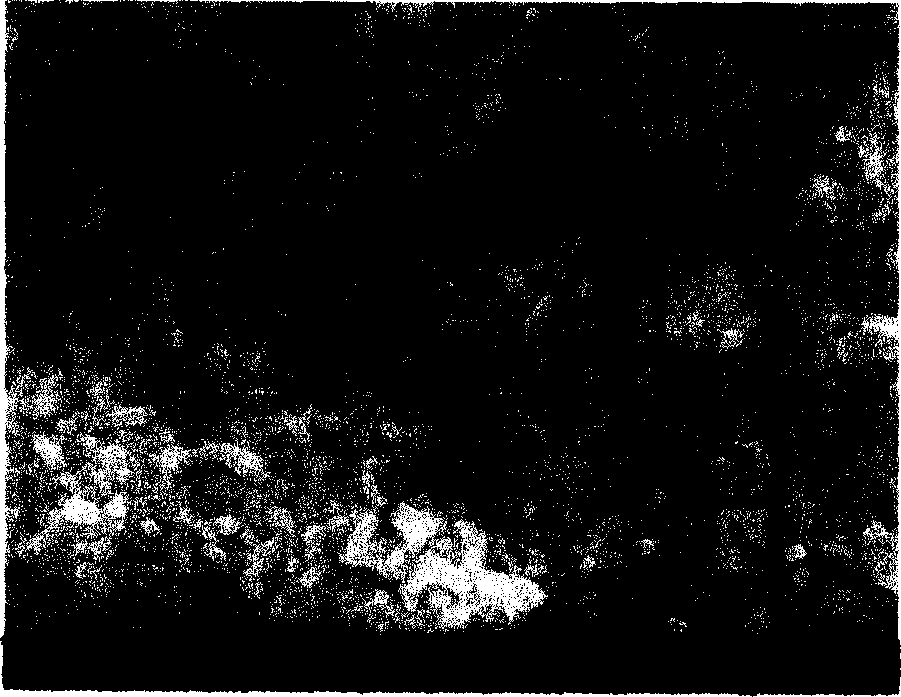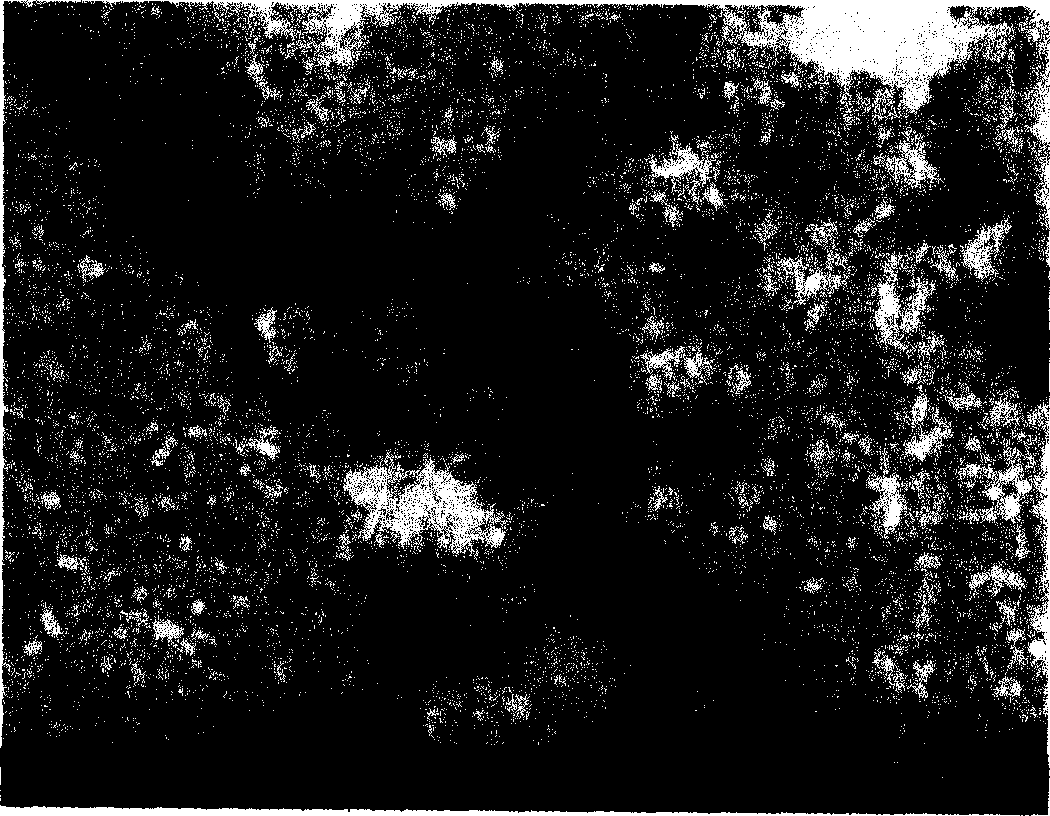Stannic oxide based nanometer rod air-sensitive material and process for preparing the same
A technology of tin dioxide and gas-sensitive materials, which is applied in the directions of tin oxide, analytical materials, electrochemical variables of materials, etc., to achieve the effects of simple process, improved sensitivity and low cost
- Summary
- Abstract
- Description
- Claims
- Application Information
AI Technical Summary
Problems solved by technology
Method used
Image
Examples
example 1
[0025] Take 1 part of tin tetrachloride by net molar (part) ratio; 1.5 parts of urea; Prepare according to the following steps after 0.08 part of bismuth nitrate:
[0026] A) Mix tin tetrachloride and urea according to the above ratio, add distilled water to form a mixed solution, stir and keep warm in a water bath at 80°C (it can also be slightly higher, but preferably not more than 95°C), and obtain a milky precipitate;
[0027] B) bismuth nitrate is dissolved in dilute nitric acid, and ammonia water is added dropwise while stirring until a milky precipitate is formed;
[0028] C) The two precipitates obtained in steps A and B are mixed, washed repeatedly with deionized water, and then put into a drying box to dry;
[0029] D) After the dried particles are ground, they are pressed into flakes with a dry powder press, and annealed at 820° C. for 2 hours to obtain tin dioxide rod-shaped grain nanopowder (its appearance is as follows: figure 2 shown).
[0030] Using the resi...
example 2
[0034] Take by weighing 1 part of tin tetrachloride, 3 parts of urea, 0.12 part of bismuth nitrate by net molar (part) ratio, prepare by the same steps and order of example 1, difference is that the annealing temperature of step D) is 850 ℃, The annealing time is 1 hour. The appearance of the tin dioxide rod-shaped nanopowder prepared in this embodiment is as follows: image 3 shown.
[0035] Using the resistive gas sensor produced by the tin dioxide-based nanorod gas-sensitive material of this embodiment, the measured resistance (KΩ) value in air and the sensitivity variation parameters in 500ppm ethanol gas with heating voltage are shown in Table 2.
[0036] Table 2:
[0037]
example 3
[0039] Take by weighing 1 part of tin tetrachloride, 2 parts of urea, 0.1 part of bismuth nitrate by net molar (parts) ratio, prepare by the same steps and order of example 1, difference is that the annealing temperature of step D) is 800 ℃, The annealing time is 3 hours.
[0040] Using the resistive gas sensor produced by the tin dioxide-based nanorod gas-sensitive material of this embodiment, the measured resistance (KΩ) value in air and the sensitivity variation parameters in 500ppm ethanol gas with heating voltage are shown in Table 3.
[0041] table 3:
[0042]
PUM
 Login to View More
Login to View More Abstract
Description
Claims
Application Information
 Login to View More
Login to View More - R&D
- Intellectual Property
- Life Sciences
- Materials
- Tech Scout
- Unparalleled Data Quality
- Higher Quality Content
- 60% Fewer Hallucinations
Browse by: Latest US Patents, China's latest patents, Technical Efficacy Thesaurus, Application Domain, Technology Topic, Popular Technical Reports.
© 2025 PatSnap. All rights reserved.Legal|Privacy policy|Modern Slavery Act Transparency Statement|Sitemap|About US| Contact US: help@patsnap.com



